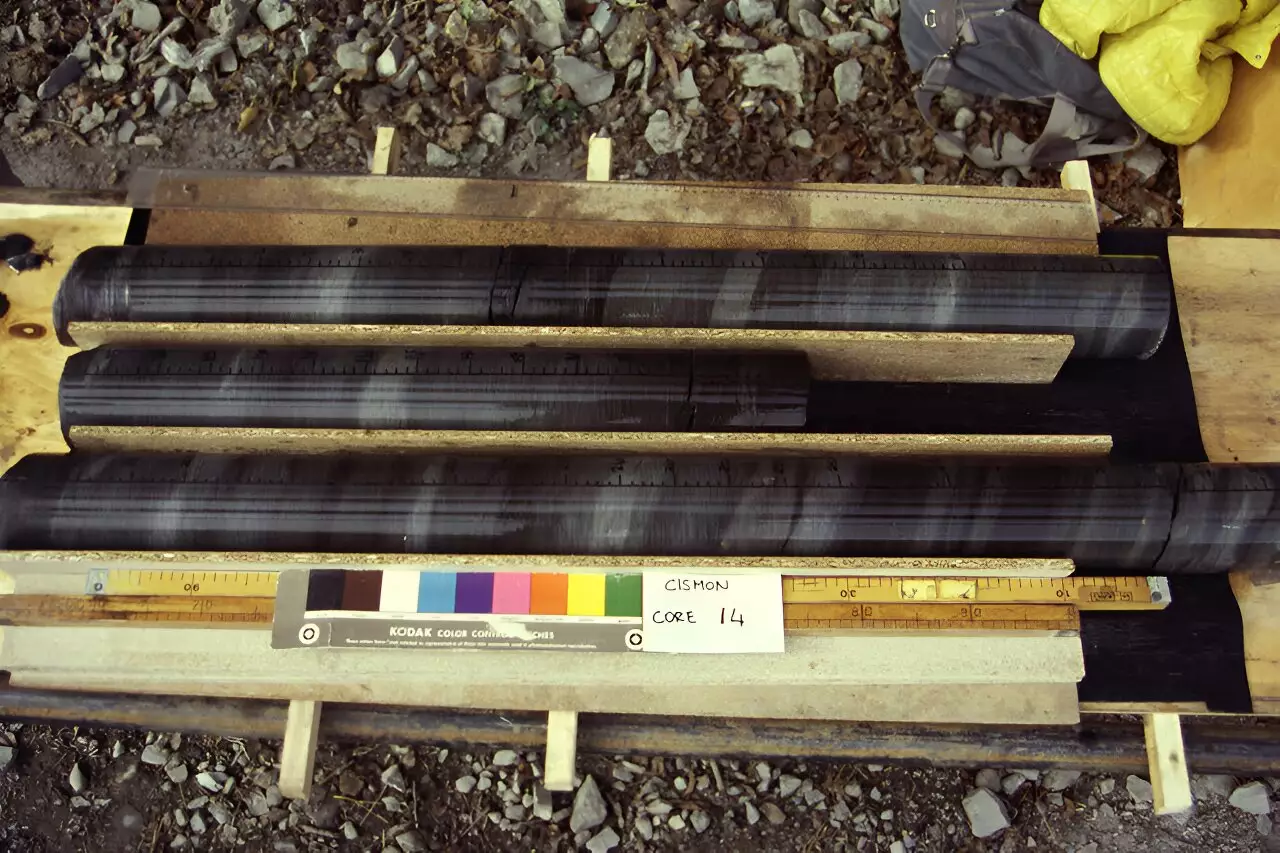The intricate interplay between climate and ocean health is not merely a contemporary phenomena; instead, it has roots that stretch back millions of years. Recent research spearheaded by Ocean Networks Canada provides an enlightening glimpse into our planet’s geological past, revealing that massive volcanic CO2 emissions over 120 million years ago catalyzed a significant event of ocean deoxygenation. As we grapple with modern climate challenges, understanding these ancient occurrences may illuminate the perilous thresholds we approach today.
The study, aptly titled “A climate threshold for ocean deoxygenation during the Early Cretaceous,” taps into geochemical analyses conducted on sedimentary rock samples archived at the University of Milan. This research allows scientists to paint a vivid picture of Earth’s environmental conditions between 115 and 130 million years ago. By meticulously analyzing the geochemical footprint of these rocks, researchers, led by Kohen Bauer, have managed to construct a detailed timeline of environmental changes during the Early Cretaceous.
According to Bauer, the data indicates that significant volcanic activities led to acute spikes in atmospheric CO2 levels, triggering a climate warming event that ultimately pushed ocean systems past a critical point of oxygen depletion. The implication is striking; once this tipping point was breached, it marked the dawn of a prolonged period of ecological disturbance lasting well over two million years.
The Modern Parallel: A Looming Threat
Fast forward to present day, and humanity stands at a precarious junction. Current climate models predict alarming rates of warming driven by anthropogenic CO2 emissions, a situation that bears resemblance to the volcanic catastrophes of the Early Cretaceous. The stark reality is that our emissions are occurring at an unprecedented pace, outstripping the speed of all historical volcanic incidents recorded over the last half billion years.
The consequences of crossing this climate threshold today could mirror those of the ancient oceans, leading to a new phase of widespread deoxygenation. Bauer warns that if we are not vigilant in our attempts to mitigate climate change, the future of marine ecosystems—and subsequently human health—may hang in the balance. Deoxygenation can lead to drastic shifts in biodiversity, affecting countless species, and disrupting the stability of entire ecosystems.
The Natural Mechanism of Recovery
While the narrative of ocean deoxygenation may seem dire, the historical record indicates potential pathways back to equilibrium. The research touches upon a natural process that restored oxygen levels in Earth’s ancient oceans, which, significantly, took over a million years to occur. This recovery can be attributed to the mechanism of silicate rock weathering, acting as Earth’s long-term carbon cycle stabilizer by effectively reducing atmospheric CO2 levels.
Bauer notes the critical role that rock weathering plays in climate regulation. As carbon levels eventually fell below the critical thresholds, it facilitated the rapid reoxygenation of the oceans after eons of warmth. This highlights the importance of Earth’s natural feedback systems and offers a glimmer of hope that restoration is possible, though time frames may be unacceptable within human lifespans.
The findings of this research resonate beyond scientific curiosity; they represent urgent calls to action for policymakers and environmental advocates. The historical benchmarks established through this study allow us to understand the delicate balance within which Earth’s climate and marine systems operate. Understanding past thresholds can inform current policies, guiding decisions towards sustainable practices that could prevent crossing dangerous ecological limits in the present.
As highlighted by senior author Sean Crowe, these empirical insights provide context for assessing the relationships between ongoing climate change, ocean deoxygenation, and their broader implications on global biodiversity and ecosystem resilience. Work from sources like the UNESCO Global Ocean Oxygen Network emphasizes that aquatic deoxygenation is indeed a critical planetary boundary, reinforcing the urgency of maintaining this balance.
The exploration of ancient Earth’s responses to dramatic increases in atmospheric CO2 reveals chilling parallels to the present. As we stand on the precipice of severe climate change, history offers crucial lessons. Recognizing the consequences of crossing natural thresholds reinforces the importance of immediate action on climate issues. Armed with historical context and the knowledge that nature has its recovery processes, society must prioritize strategies aimed at mitigating human impact on the environment. It is not mere idle speculation; the past is a catalyst for informed future action.


Leave a Reply